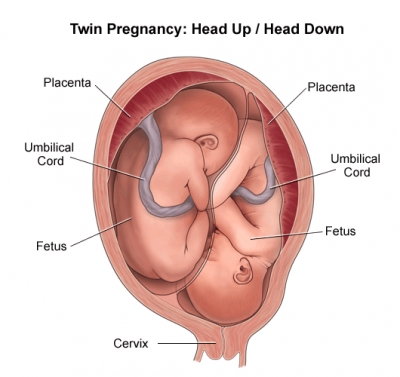Management of IVF in our clinic, is characterised by a conservative approach to embryo transfer, in order to reduce the likelihood of multiple births. Generally between one to three embryos are transferred in each attempt, depending on the individual patients history.
Although the world's first IVF baby was born from a natural cycle with spontaneous ovulation, controlled ovarian hyperstimulation is now the norm. Consequently, multiple pregnancy has become common, and it has been estimated that in total, 45% of IVF babies born are from multiple pregnancies, with twinning rate of nearly 25%, triplet rate of 2-3% and quadruplet rate of 0.5% of pregnancies worldwide.
Unfortunately, neonatal and perinatal mortality rates are 3 to 6 times higher for twins when compared to singleton births, and 5 to 15 times for higher order multiples, and the risk of cerebral palsy is six times higher for twins, and twenty times higher for triplets. Multiple pregnancy also places greater physical strain on the mother, with an increased incidence of miscarriage, high blood pressure, bleeding during pregnancy, increased risk of vomiting during pregnancy, and premature birth.
The complication of being born prematurely includes difficulty with breathing, higher incidence of jaundice, and feeding difficulties. Twins also have a higher incidence of congenital abnormality. Triplets are almost always delivered by Caesarean section, and twins far more often. Even if the babies are born normal, caring for two, three or more babies can be a challenge, with extra emotional, physical and financial stresses.
To reduce the risk of multiple pregnancies we have to limit the number of embryos transferred. In deciding how many embryos are to be transferred, we need to consider the number of previous pregnancies, woman's age, the duration of infertility, the reason for the fertility problem, the number of previous attempts, the number of fertilised embryos, and the cleavage stage and quality of embryos replaced. Excess embryos that are of good quality can be frozen, stored, and used in a subsequent cycle, if necessary.


